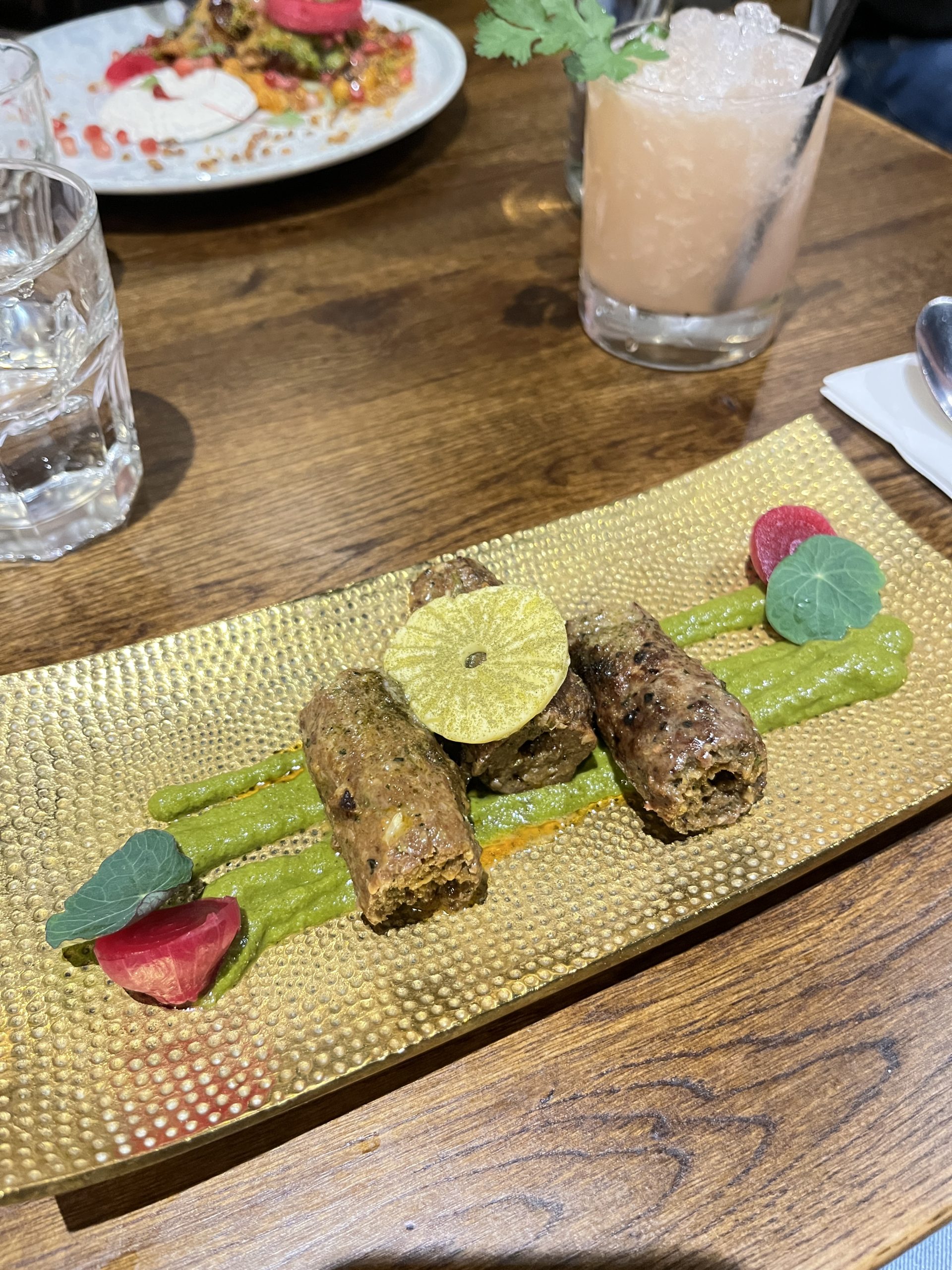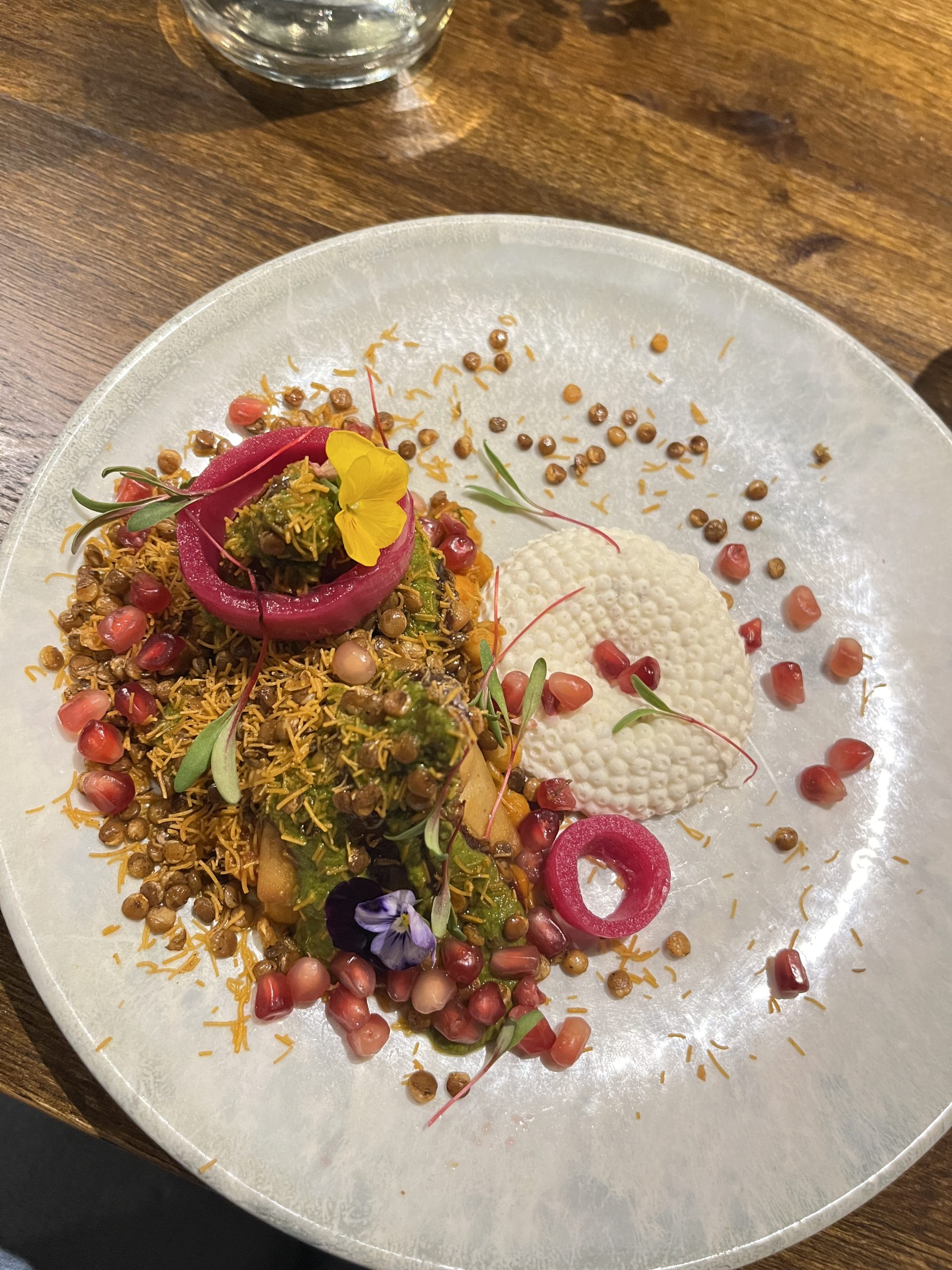
Restaurants / Reviews
Nutmeg Street Kitchen, St Augustine’s Parade: ‘I can live on their biryani every day’ – restaurant review
Squeezed between a pharmacist and a Colombian coffee shop is one of Bristol’s truly authentic Indian restaurants, that celebrates vibrant flavours of Indian street markets.
Nutmeg Street Kitchen opened in 2023, after the soaring popularity of its sister restaurant Nutmeg in Clifton. Walking in on a recent Saturday with a friend for dinner, I was unaware that this was about to be one of my best meals in Bristol.
After you’ve been greeted and seated (in our case without reservation), you can hear soft tunes in the background that ties in perfectly with the charming ambience. A few framed pictures hang across the restaurant that my friend points out are digital versions of matchbox covers from different parts of India.
is needed now More than ever
Quirky? Certainly. After all, I don’t know many people who would put matchbox covers on the walls of a restaurant that hopes to strike chords of fine dining and fancy.

Matchbox covers framed as art hung across the restaurant – photo: Alston D’souza
Once my friend had ordered his cocktail and I’d confirmed that all I’ll have is a glass of water, we dived into the menu. Split into starters, mains, sides and accompaniments, street food from almost every corner of India had made its way on to this menu.
For starters, my friend went the meaty way and chose the lamb seekh kebab (£9.5) while I continued my long-standing affair with chaats and ordered a plate of their ragda samosa (£8).
Kebabs generally arrive on or off skewers with a bowl of chutney placed on the table separately. Some restaurants give you a multitude of chutneys to enjoy with your kebabs and some might even settle for store-bought ketchup. But we were in for a pleasant surprise.
Three chunky pieces of warm kebabs arrived like royalty on a gold platter, neatly sitting on a bed of green chutney. The kebabs were garnished with a slice of lemon that diners could squeeze to liking and finished off with a generous dollop of fresh butter. My friend was delighted with the soft and perfectly cooked lamb mince, which despite being served bougie, reminded him of a true kebab from the streets of India. Although the butter could have been dialled down a little, as it hindered the flavours of the kebab.

The succulent kebabs with green chutney tucked beneath them were soft and juicy – photo: Karen Johnson
My brain had shifted midway between watching my friend’s kebabs, because our very kind server had propped a stunning plate of what she insisted was my humble ragda samosa. Ragda samosa was supposed to be a rendition of a rugged street snack: samosa chaat. I’ve had samosa chaat all my life – samosas torn into pieces, dunked in yoghurt, chutney, a mashed potatoes and peas sauce, onions and a lot more that I can remember. But here in front of me was a work of art. The broken pieces of samosas, covered in layers of chutneys, sauces and condiments neatly arranged on one side of the plate, garnished with edible flowers and pomegranate sat next to a solid white block. Upon a little probing I realised this was honey yoghurt in a sold form. The honey yoghurt cracked and eaten with bites of the samosa mix, was pure bliss reminding me of flavour profiles of the same samosa chaat I devoured on the streets of India.
For mains, we decided to keep it simple and order one pot of their Hyderabadi chicken biryani (£19). The biryani arrived sealed with dum, the sight of which could have honestly made me cry.
The art of making biryani thrives on time: letting the spices and sauce imbibe deep flavours on the stove for hours, before layering it with rice and sealing it with a dum. The dum is nothing but whole wheat flour mixed in water to make a dough, that is then stuck around the cooking pot almost as if it were play-dough.

With flowers, chutney and pomegranate, the ragda samosa was a colourful revelation in flavours – photo: Karen Johnson
One thing that I hadn’t mentioned before is that I was sick – which meant we’d to cut short our in-house dining and take away the rest to enjoy at home. I was disappointed that I couldn’t stay for desserts but maybe that’s an excuse to visit again?
When we got back home and I’d rested for sometime, my friend and I re-heated the biryani and dug into it straight from the take away container. I need to confess that I’ve eaten their biryani a few times, usually home delivered, and each time I can only be reminded of how much it tastes like home.
Served with deep-fried, caramelised onions and a pot of raita, I love the subtle spices that hit you along with the tangy, sweet, umami flavours of the sauce. Unlike other biryanis I’ve had in the UK, which are either too sweet or too bland, this one hit home with balance. I must admit, I can live on their huge portions of chicken biryani every day without guilt.
There’s an ocean of happy emotions that surface when you’re welcomed with good hospitality, served good food and generously taken care of at a restaurant – and at Nutmeg Street Kitchen, you can expect exactly that. Raja Munuswamy, the owner of Nutmeg Street Kitchen and Nutmeg in Clifton, Kal Dosa, Nadu, and most recently Bombil, has tried to create a string of restaurants that can replicate India’s ancient hospitality, flavours and diversity. Head chef Shishir Sinha, who is also the brainchild behind the menus of all these restaurants, strives to uphold Indian flavours while committing to an upscale dining experience.
Anyone who enters Nutmeg Street Kitchen will most certainly leave clad in flavours, hospitality and memories.
Main photo: Karen Johnson
Read next:
 Our newsletters emailed directly to you
Our newsletters emailed directly to you



















